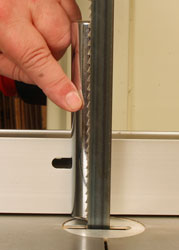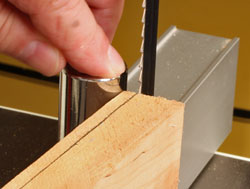In investigating resawing, I've run across the resaw post now and then. It seems many outside of luthiery use this method.
Here's the method:


_lg.jpg)
As I use a Craftsman 14" bandsaw for other purposes and there is a little drift to deal with this seems like a good option for occasionally resawing without resetting. An comments or bad sides I'm not seeing to this approach. I've adjusted the guides to minimize drift but can't seem to get it dead nuts. This seems like a good work around.